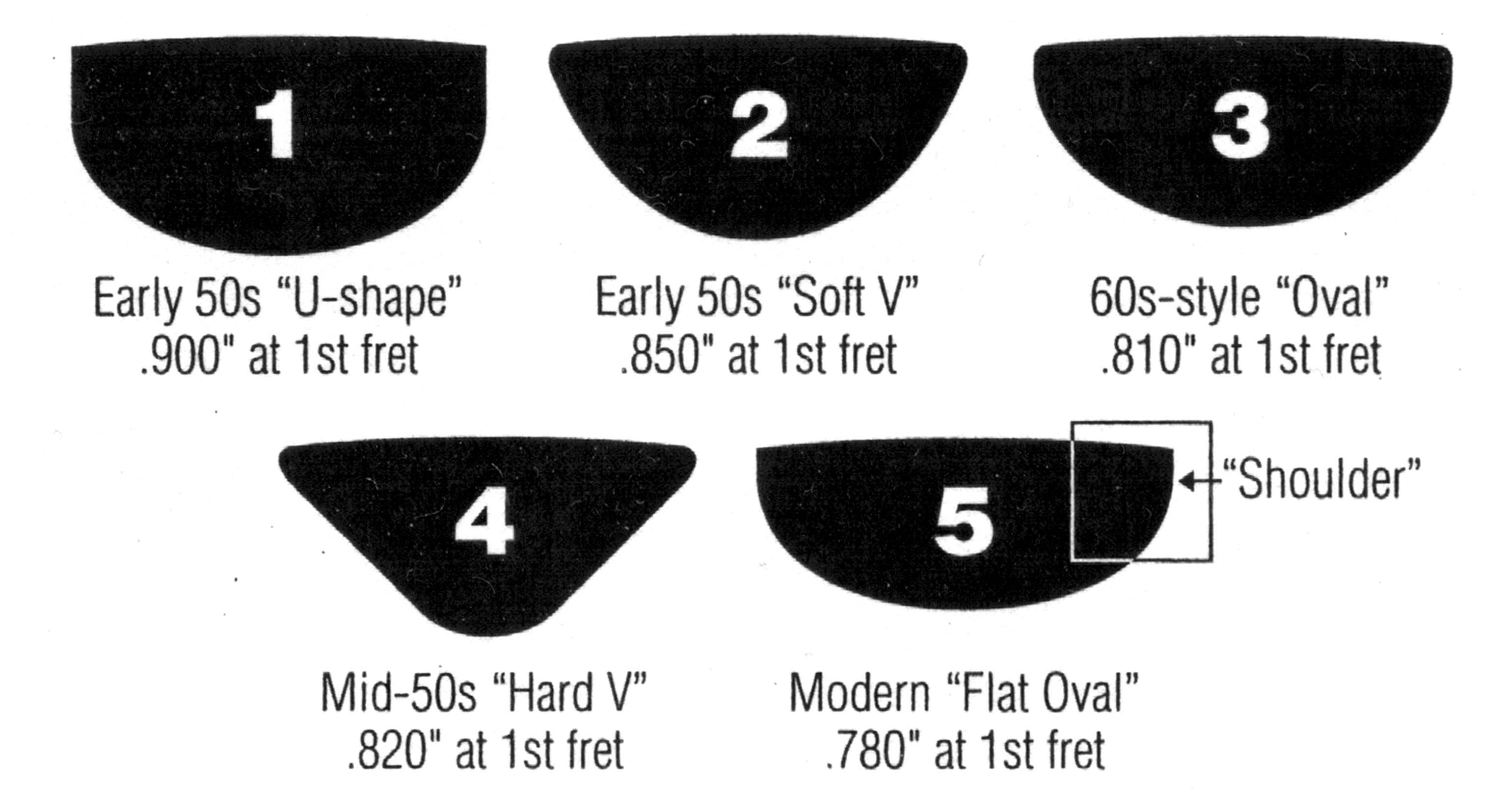
Over the years there has been a growing distortion, a 'street' interpretation of the Fender guitar neck terminology, creating some very real misconceptions and ideas about what the names of the neck shapes and types of Fender's guitar necks really are.
In a desire to restore the correct terminology to its rightful place, so we can all truly understand and know what we're really talking about when we say that a particular guitar has a "C" neck or a "U" neck which, by the way, have entirely different meanings when it comes to describing a given neck, I have created this article.
First, let's talk about neck shape or profile. The common term we use now is that a guitar, say a Stratocaster, has a "C" neck, which describes it's 'feel'. But this is incorrect terminology.
The graphic below is from Fender and describes the five basic neck profile types.

As you can see, the official designations are far different than you are probably used to hearing when describing the neck of the Fender guitars. The numbers below
the profile decriptions are the thickness of the fret board, front to back, at the first fret, not the width of the fret board.
As to the letter designations, "A", "B", "C" and "D". These were stamped on the end of the necks from the early 1960s to about 1973 and refer to the neck width at the nut - not the shape. So when people refer to a "C" neck, referring to its shape, they're wrong. Here's what they represented:
In general, the current production necks have a B nut width; The American Standard is slightly wider, somewhere in between the B and C measurements at around 111⁄16"
The Custom Shop will make whatever you want. Most customers want one of the five basic shapes, though. However, if you really want something tailored specifically to your tastes, they will hand carve a neck, but it will cost you. The most popular Custom Shop shape is No. 3.
"Boatneck", an archaic term used to describe certain neck profiles, is a misnomer because it's been used by too many people incorrectly. It used to be a reference to specific older Martin, Washburn and many big V-necked guitars. If you were to use the term today, you would be referring to a No. 4, or a No. 1056 neck.
With the advent of better machinery, Fender has settled into 5 basic "generic" neck shapes based on specs from the 1950s and 1960s. They are made on specific templates that can hold consistency without the changes and difference that occur neck to neck with hand hewn work. Production models benefit greatly from computer controlled manufacture of this sort. For example, all Eric Clapton signature model guitar necks will be identical to Eric's old Blackie, from which they took all the measurements to produce the neck for his signature guitar.
Here are the basic neck shapes Fender uses:
Any one of these patterns can be altered slightly to differentiate between one model guitar and another.
As to fret board radius dimensions, the vintage radius for early Strats and Teles was 7¼". These days the typical radius is 9½", which is nice for Blues bending and is used on the Eric Clapton model. There are a few differences, though. The SRV and Eric Johnson models have a 12" radius, which makes for easier bends and less fretting out of the strings.
So I hope this clears up some of the confusion about Fender guitar necks and how they should properly be referenced. I know it may seem trivial to many people, but in truth, when talking about a subject, I usually find it a greater benefit to be speak the facts and not opinions when dealing with specific things like measurements.